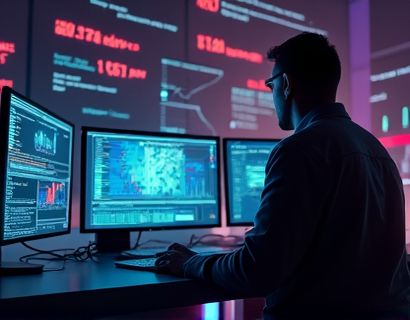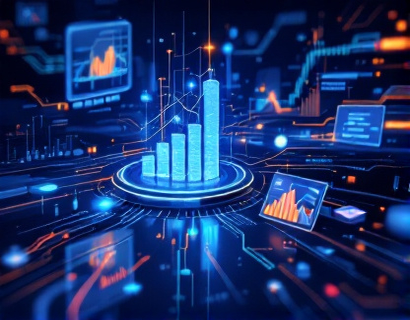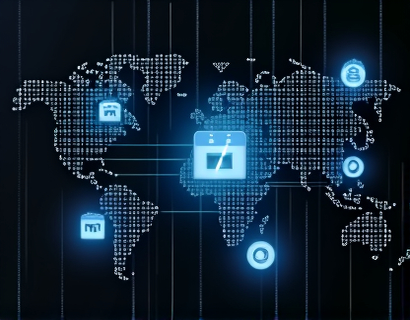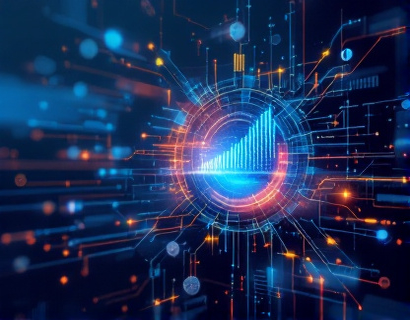Blockchain-Powered Asset Tokenization: Bridging Physical Assets with Digital Liquidity
In the evolving landscape of finance and asset management, the integration of blockchain technology stands out as a transformative force. This technology, known for its role in cryptocurrencies, offers a robust framework for asset tokenization, a process that bridges the gap between physical assets and digital liquidity. By leveraging blockchain, real-world assets can be seamlessly integrated into a secure and transparent digital ecosystem, significantly enhancing liquidity and market accessibility for investors and asset holders. This article delves into the intricacies of blockchain-powered asset tokenization, exploring its benefits, mechanisms, and the broader implications for asset management.
Understanding Asset Tokenization
Asset tokenization involves converting physical assets into digital tokens on a blockchain. These tokens represent fractional ownership or rights to the underlying asset, such as real estate, art, machinery, or even intangible assets like patents. The process begins with the identification and valuation of the asset, followed by the creation of a smart contract that defines the terms of ownership and transfer of the token. This smart contract is deployed on a blockchain, ensuring immutability and transparency.
The primary advantage of tokenization is the conversion of illiquid assets into liquid assets. Traditional physical assets are often difficult to buy, sell, or trade due to their illiquid nature. Tokenization removes these barriers by allowing assets to be divided into smaller, tradable units, making them accessible to a broader range of investors. This increased liquidity can lead to higher market efficiency and better pricing mechanisms.
Enhancing Market Accessibility
One of the most significant impacts of asset tokenization is the democratization of investment opportunities. Traditionally, high-value assets like real estate or art collections were accessible only to wealthy individuals or institutions. Tokenization lowers the entry barrier, enabling retail investors to participate in these markets. For instance, a piece of commercial real estate valued at millions can be tokenized into thousands of smaller shares, each representing a fraction of the property. This not only increases the pool of potential investors but also diversifies the ownership structure, reducing concentration risk.
Moreover, tokenization facilitates global access to assets. Physical assets are often geographically bound, limiting their market to local or regional investors. Digital tokens, however, can be traded on global exchanges, attracting a worldwide investor base. This global reach can lead to more competitive pricing and increased transaction volumes, further enhancing market liquidity.
Security and Transparency
Blockchain technology is renowned for its security and transparency features, which are pivotal in asset tokenization. The decentralized and distributed nature of blockchain ensures that transaction records are immutable and tamper-proof. Each token's ownership history is transparently recorded on the blockchain, providing a clear and auditable trail. This level of transparency builds trust among participants and reduces the risk of fraud or disputes.
Smart contracts, which automate the execution of contractual obligations, add another layer of security. These self-executing contracts with the terms directly written into code eliminate the need for intermediaries, reducing transaction costs and processing times. For example, when a token changes hands, the smart contract automatically updates the ownership records and executes any predefined conditions, such as payment transfers or access rights.
Case Studies and Real-World Applications
Several notable projects have successfully implemented asset tokenization, showcasing its potential and benefits. One prominent example is RealT, a platform that tokenizes commercial real estate. RealT allows investors to purchase fractions of commercial properties through digital tokens, providing exposure to the real estate market without the need for large upfront investments. This model has attracted a diverse range of investors, from individual retail investors to institutional funds.
Another example is the tokenization of art and collectibles. Platforms like SuperRare use blockchain to authenticate and tokenize unique digital art, ensuring provenance and scarcity. This not only protects artists and collectors but also creates new revenue streams through secondary market trading. The transparency of the blockchain ensures that the ownership and history of each piece are verifiable, adding value to the art market.
Challenges and Considerations
Despite its numerous advantages, asset tokenization is not without challenges. Regulatory uncertainty remains a significant hurdle. Different jurisdictions have varying regulations regarding securities and digital assets, which can complicate the tokenization process. Compliance with these regulations is crucial to avoid legal issues and ensure the legitimacy of tokenized assets.
Technical challenges also exist, particularly in scaling blockchain networks to handle the high volume of transactions required for asset trading. While major blockchains like Ethereum are working on improving scalability, the current limitations can affect transaction speeds and costs. Additionally, the complexity of integrating physical assets with digital tokens requires robust technical infrastructure and expertise.
Future Prospects
The future of asset tokenization looks promising, with ongoing advancements in blockchain technology addressing current challenges. The development of layer 2 solutions and cross-chain interoperability will enhance scalability and reduce costs. Moreover, increased regulatory clarity and the establishment of industry standards will foster greater adoption and trust in tokenized assets.
As the ecosystem matures, we can expect to see more innovative applications of asset tokenization across various sectors. From infrastructure and utilities to intellectual property and even environmental assets, the potential for tokenization is vast. The integration of Internet of Things (IoT) devices with blockchain can further enhance the management and monetization of physical assets, creating a more interconnected and efficient economy.
Conclusion
Blockchain-powered asset tokenization represents a paradigm shift in asset management, offering enhanced liquidity, market accessibility, and security. By converting physical assets into digital tokens, this technology breaks down barriers and opens up new investment opportunities. While challenges remain, the ongoing evolution of blockchain and regulatory frameworks will pave the way for a more inclusive and dynamic asset market. As more entities adopt tokenization, the future of asset management will be characterized by greater transparency, efficiency, and global connectivity.










































